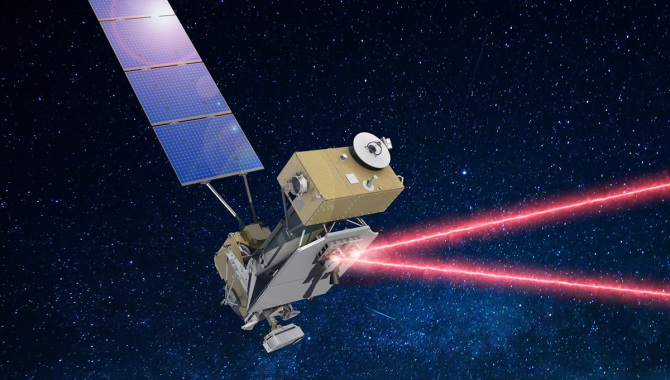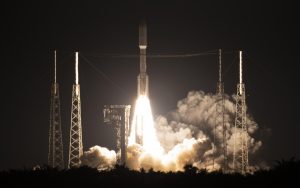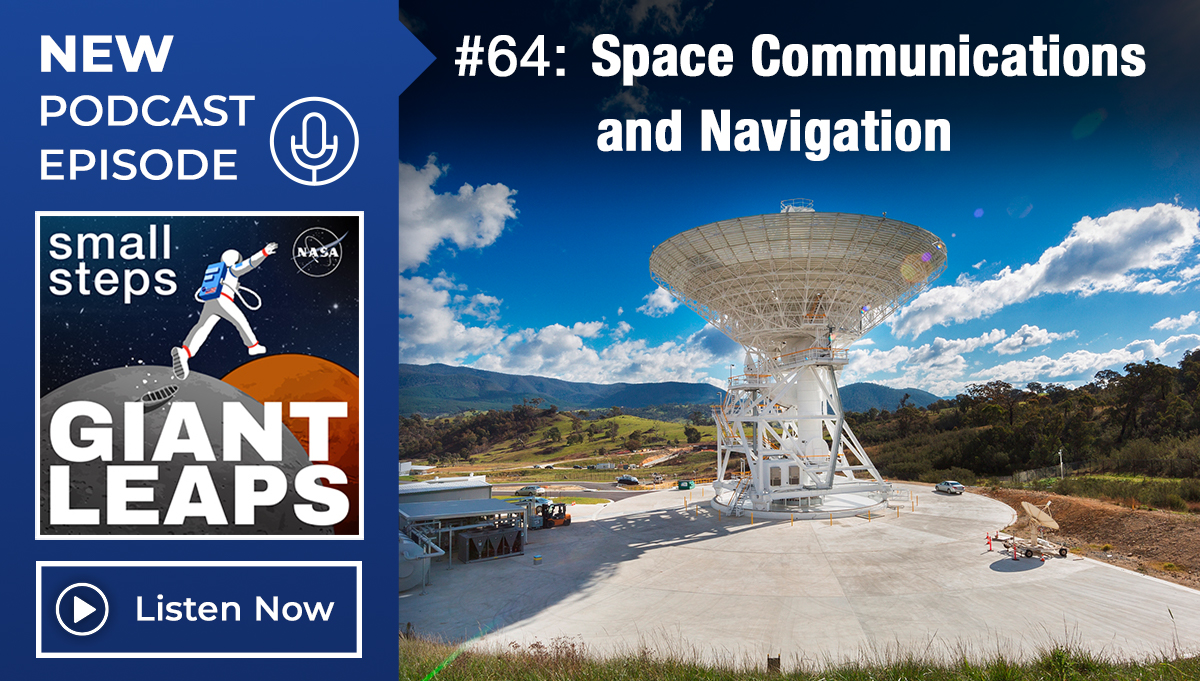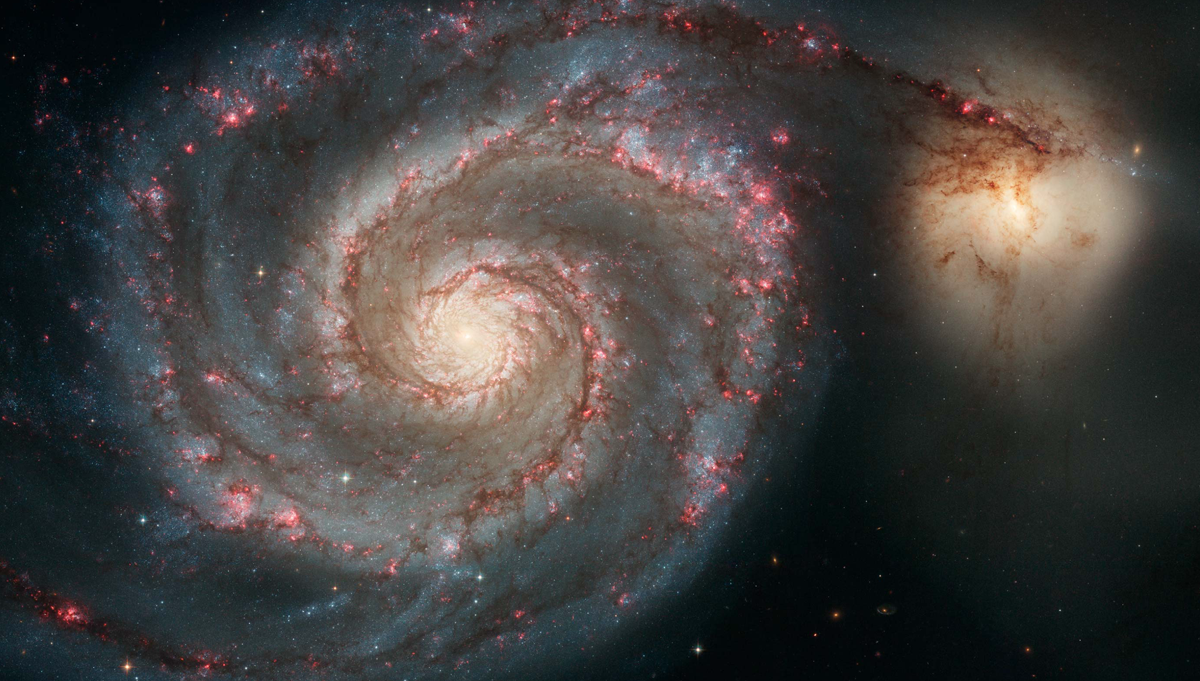
This artist’s illustration shows NASA’s Laser Communications Relay Demonstration relaying a laser communication signal to a ground station on Earth. Optical communications systems promise dramatic increases in data transfer rates.
Credit: NASA
Bidirectional system offers significant increase in data transfer rates.
As NASA works to establish a long-term human presence at the Moon and develop an eventual human mission to Mars, scientific instruments have progressed to the point that they can generate vast amounts of data and high-definition imagery that require greater and greater bandwidth. Using state-of-the-art radio frequency technology, a surface map of Mars developed with modern technology would contain so much data it would require about nine weeks to transmit to Earth.
On the morning of December 7, NASA launched a mission to demonstrate a potential solution to the problem, an optical communication technology network that employs lasers to transmit data. Because the wavelengths of energy are shorter, such a system can transmit between 10 and 100 times more data per second than communications via radio frequency. Such a system could transmit the map of Mars in just nine days.
The Laser Communications Relay Demonstration (LCRD) has a two-year primary mission to demonstrate the potential of a bi-directional optical communications system that can transmit data space-to-space, space-to-ground, and ground-to-space at rates up to 1.2 gigabits per second. The LCRD payload is hosted onboard the U.S. Department of Defense’s Space Test Program Satellite 6. It will reside in geosynchronous orbit, about 22,000 miles above Earth.
“This new system will not only provide a higher data transmission rate, but optimize what we call SWAP or size, weight, and power,” said Trudy Kortes, Director of Technology Demonstrations, NASA’s Space Technology Mission Directorate (STMD), speaking at a NASA press briefing. “[LCRD will] be smaller in volume, weigh less, and use less power than current state-of-the-art. …Tech demos like LCRD are absolutely critical to enabling our future mission needs.”
The payload consists of two optical terminals, each capable of bidirectional communication. Between those terminals is switching capability that enables the system to receive data on one terminal, switch it to the other terminal, and then relay the data to its destination. The system also includes ground terminals atop mountains at Haleakala, Hawaii and Table Mountain, California, as well as an LCRD Mission Operations Center (LMOC) at White Sands, New Mexico.
LCRD builds upon the success of NASA’s Lunar Laser Communications Demonstration, which in 2013 proved the viability of space-to-Earth optical communication, transmitting data 239,000 miles to Earth from equipment aboard a satellite in lunar orbit. The data rate of 622 Mb per second was six times faster than state-of-the-art radio frequency systems at the time.
“One of the goals of LCRD is to help us learn how to run an optical network, and the ground segment is a major part of that network,” said Miriam Wennersten, LCRD Ground Segment Manager, speaking at a NASA press briefing. Wennersten noted that siting ground stations on mountaintops minimizes atmospheric disruptions, which is crucial because optical communication wavelengths can’t penetrate clouds. Siting the ground stations approximately 2,500 miles apart increases the likelihood that at least one of the stations will have favorable weather conditions.

A United Launch Alliance Atlas V rocket launches on the Department of Defense’s Space Test Program 3 (STP-3) mission from Space Launch Complex 41 at Cape Canaveral Space Force Station, Tuesday, Dec. 7, 2021, from NASA’s Kennedy Space Center in Florida.
Credit: NASA/Joel Kowsky
“When we first launch, the two endpoints that LCRD’s payload will be communicating with are [the] two ground stations…,” said Dave Israel, LCRD Principal Investigator, Goddard Space Flight Center, speaking at a NASA press briefing. “In our demonstrations we’ll be relaying data between these two ground endpoints.”
The LMOC will function as the control center of the LCRD system, scheduling events to align with available resources, adapting the event based on weather conditions at the ground stations, and sending configuration commands to the LCRD payload to direct laser pointing, ground station targeting, link modulation, and data routing through the payload.
“While the events are ongoing, the LMOC monitors in real time the entire system and watches the links and data services that are writing on that link,” Wennersten said. “After those events, we’ll have all the telemetry archived and available to our experiment team for post processing and correlation. As part of the LCRD experiment we are collecting weather data at the ground stations for analysis of the laser communications under … different conditions.”
Scheduled in 2022, NASA will send a terminal to the International Space Station that will become part of the LCRD demonstration. The ILLUMA-T—an acronym for the Integrated LCRD LEO (Low-Earth-Orbit) User Modem and Amplifier Terminal—will send high-resolution science data from the ISS to the LCRD payload at rates of 1.2 gigabits per second over laser links. The LCRD payload will then relay that data to one of the two ground terminals. This will enable the ISS to transmit more high-resolution experiment data to Earth.
“[LCRD] will also be a learning experience for us about what we would want to do in terms of high-bandwidth data aggregation at the Moon, as we focus on … building up that exploration capability for [a] sustainable lunar presence,” said Jason Mitchell, Director, NASA’s SCaN Advanced Communications & Navigation Technology Division.
“We can aggregate that data and send it back over these high-bandwidth data links. Then that extends exactly in a replicable way to what we expect we will need for exploration at Mars. This is exactly the kind of thing that we need to have, because the data rate for things we will learn at Mars will demand high-bandwidth,” Mitchell said.
Click here to learn more about Laser Communications Relay Demonstration in our podcast episode.









